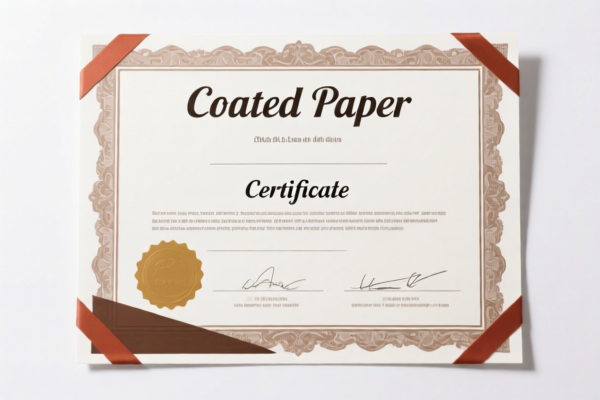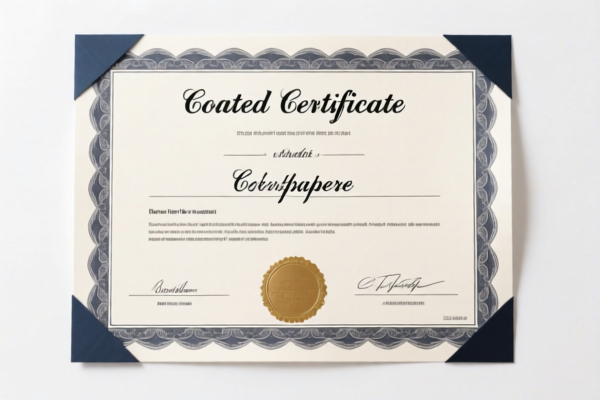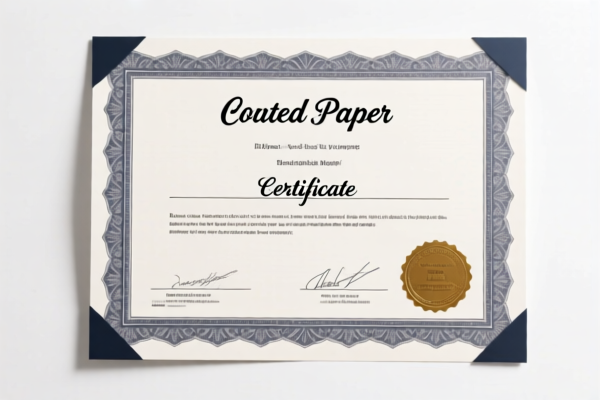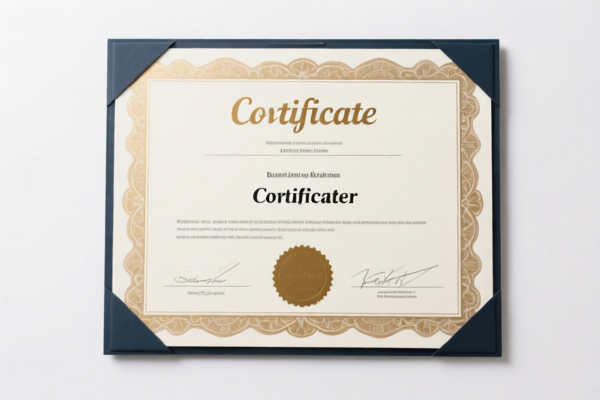| HS Code | Official Doc | Tariff Rate | Origin | Destination | Effective Date |
|---|---|---|---|---|---|
| 4911100080 | Doc | 37.5% | CN | US | 2025-05-12 |
| 4911998000 | Doc | 37.5% | CN | US | 2025-05-12 |
| 4906000000 | Doc | 37.5% | CN | US | 2025-05-12 |
| 9701990000 | Doc | 37.5% | CN | US | 2025-05-12 |
| 8306300000 | Doc | 82.7% | CN | US | 2025-05-12 |
| 8306290000 | Doc | 30.0% | CN | US | 2025-05-12 |
| 8310000000 | Doc | 55.0% | CN | US | 2025-05-12 |
| 4820900000 | Doc | 55.0% | CN | US | 2025-05-12 |
| 4820102060 | Doc | 55.0% | CN | US | 2025-05-12 |
| 4817300000 | Doc | 55.0% | CN | US | 2025-05-12 |
| 4817204000 | Doc | 55.0% | CN | US | 2025-05-12 |




Certificate Cover
A certificate cover, also known as a diploma cover, is a protective and decorative folder used to present a certificate, diploma, or other important document of achievement.
Material
Certificate covers are commonly constructed from the following materials:
- Plastic: Typically made from polypropylene or vinyl, offering durability and resistance to wear and tear. Often used for frequently handled certificates.
- Leatherette/Faux Leather: Provides a more premium look and feel, often embossed or textured. Offers a balance between aesthetics and cost.
- Real Leather: The highest quality option, offering a luxurious appearance and long-lasting durability. More expensive than other materials.
- Paper/Cardstock: Used for simpler, less formal presentations. Often used as an inner sleeve within a plastic or leatherette cover.
Purpose
The primary purposes of a certificate cover are:
- Protection: Safeguards the certificate from physical damage such as bending, tearing, and staining.
- Presentation: Enhances the visual appeal and perceived value of the certificate.
- Formalization: Adds a sense of importance and formality to the presentation of the achievement.
- Preservation: Helps maintain the certificate’s condition over time.
Function
A certificate cover functions as a holder, typically featuring:
- Sliding Opening: Allows easy insertion and removal of the certificate.
- Secure Fit: Designed to hold the certificate firmly in place.
- Textured Surface: Prevents slipping and provides a better grip.
- Embossing/Printing Area: Space for customization with institution logos, names, or other relevant information.
Usage Scenarios
Certificate covers are used in a variety of settings:
- Graduation Ceremonies: Presenting diplomas to graduates.
- Award Presentations: Recognizing achievements in academic, professional, or personal endeavors.
- Employee Recognition Programs: Awarding certificates for performance or milestones.
- Training Course Completion: Presenting certificates to participants who successfully complete a course.
- Professional Certifications: Displaying credentials such as licenses or certifications.
Common Types
- Standard/Traditional Covers: Typically made of plastic or leatherette with a sliding opening.
- Embossed Covers: Feature raised designs or logos for a more sophisticated look.
- Custom Covers: Personalized with institution logos, names, or other specific information.
- Portfolio Covers: Designed to hold multiple certificates or documents.
- Leather Covers: Made from real leather for a premium appearance and durability.
- Frame-Style Covers: Incorporate a frame-like design for display purposes.
Based on the material, use, function, and application scenarios, a “certificate cover” generally refers to a protective covering for certificates, often made of paper or paperboard.
Here are the relevant HS codes found within the provided reference material:
-
4820900000: Registers, account books, notebooks, order books, receipt books, letter pads, memorandum pads, diaries and similar articles, exercise books, blotting pads, binders (looseleaf or other), folders, file covers, manifold business forms, interleaved carbon sets and other articles of stationery, of paper or paperboard; albums for samples or for collections and book covers (including cover boards and book jackets) of paper or paperboard: Other.
- Chapter 48: Paper or paperboard. This chapter covers a wide range of paper and paperboard articles.
- Heading 4820: Registers, account books, etc., and albums/book covers. This heading specifically includes book covers, which can encompass certificate covers.
- Subheading 4820900000: Other. This indicates that the certificate cover doesn't fall into more specific categories within heading 4820.
-
4817300000: Envelopes, letter cards, plain postcards and correspondence cards, of paper or paperboard; boxes, pouches, wallets and writing compendiums, of paper or paperboard, containing an assortment of paper stationery: Boxes, pouches, wallets and writing compendiums, of paper or paperboard, containing an assortment of paper stationery.
- Chapter 48: Paper or paperboard.
- Heading 4817: Envelopes, letter cards, etc. and boxes/pouches. This heading includes pouches and wallets, which could be used as certificate covers if they contain an assortment of stationery.
- Subheading 4817300000: Boxes, pouches, wallets and writing compendiums, of paper or paperboard, containing an assortment of paper stationery. This specifically refers to items containing an assortment of stationery.
-
4911998000: Other printed matter, including printed pictures and photographs: Other: Other: Other: Other.
- Chapter 49: Printed books, maps, and other printed matter.
- Heading 4911: Other printed matter, including printed pictures and photographs. This heading covers a broad range of printed materials.
- Subheading 4911998000: Other: Other: Other: Other. This indicates a very general category of other printed matter.
According to the provided reference material, the HS code options related to 'certificate cover' are limited, with only the following 3 found.
Customer Reviews
No reviews yet.